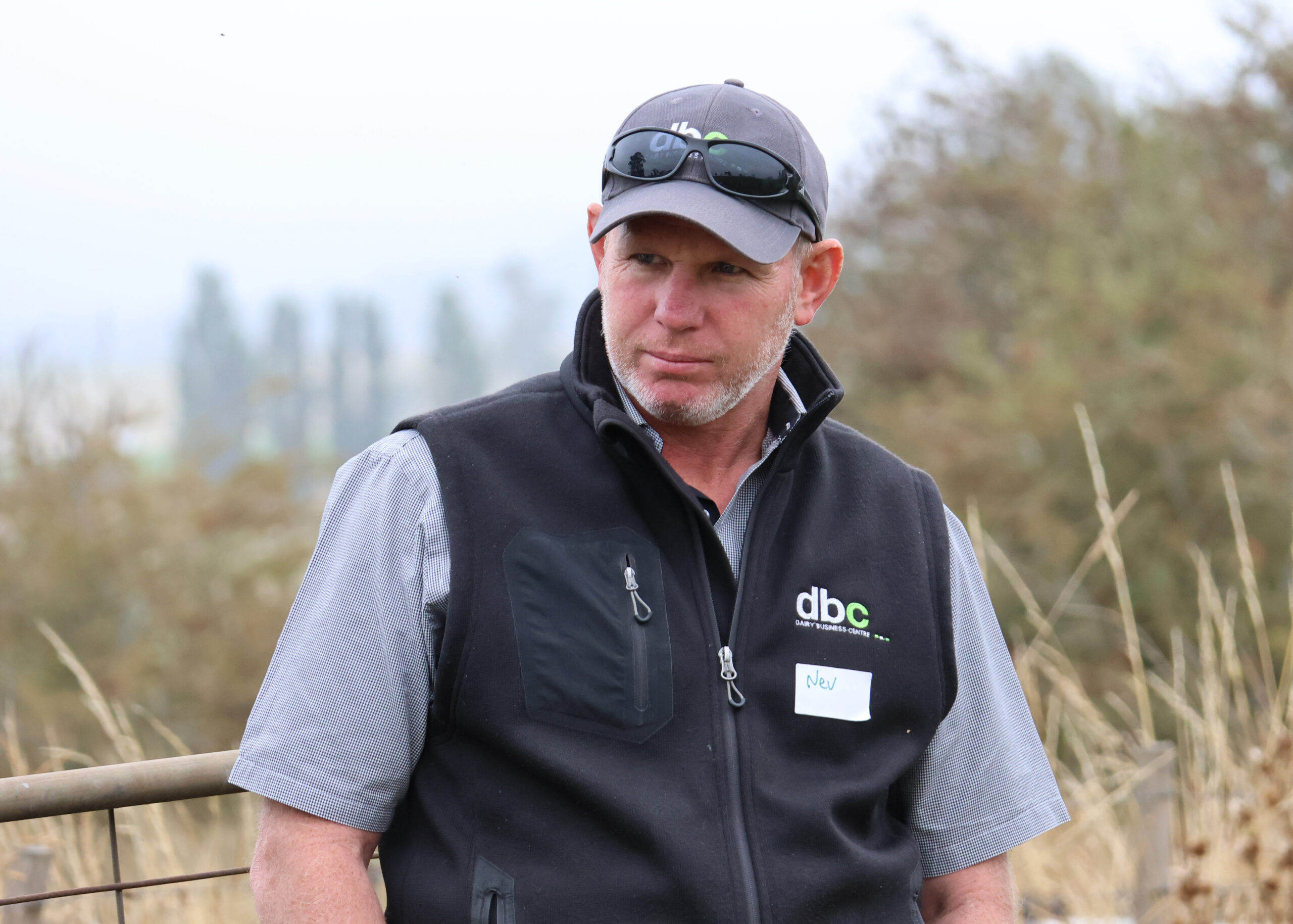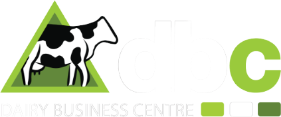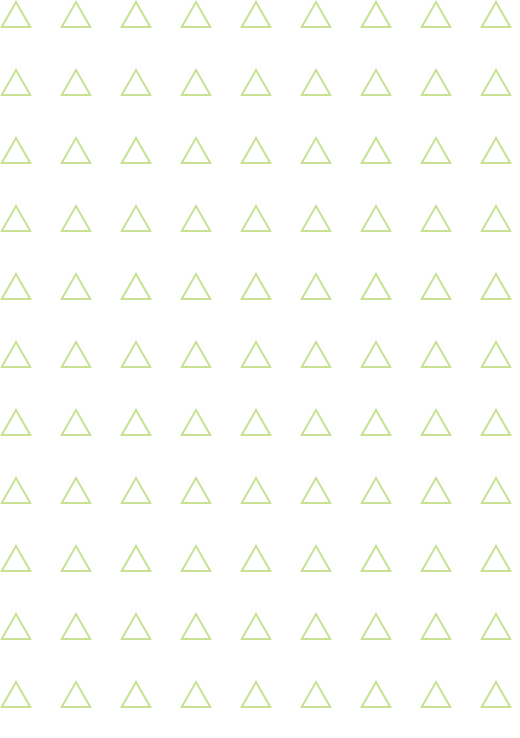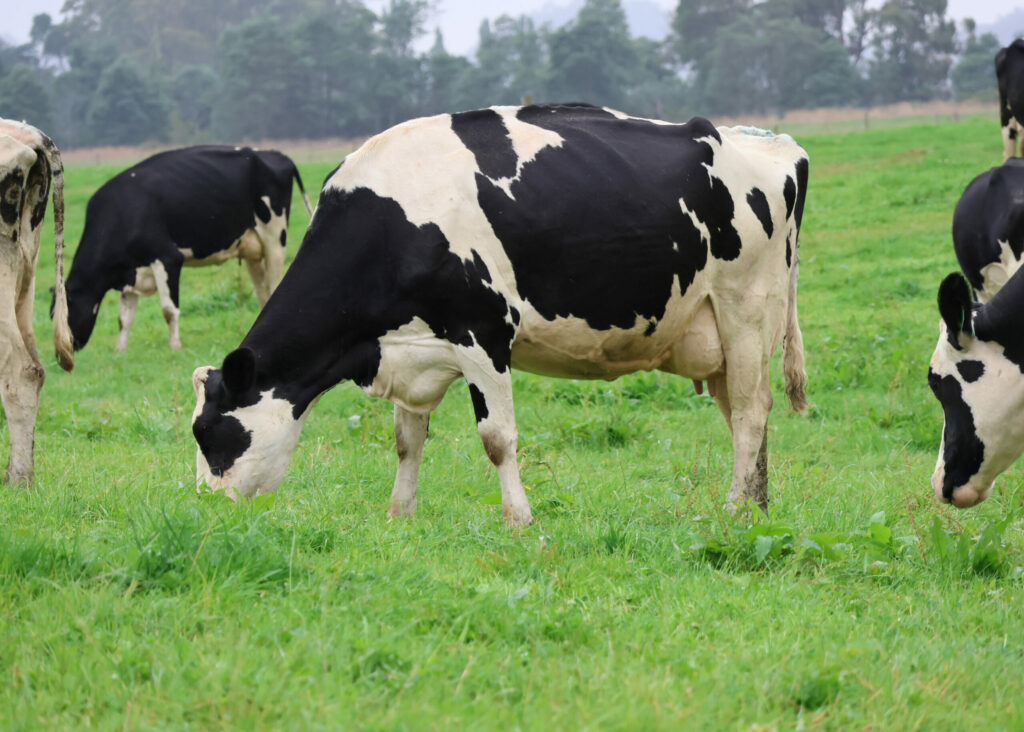Steve Chilcott is one of the early adopters of biological farming. He says it wasn’t because he was a visionary. It was more about survival, that he was cornered, and that he trusted his advisors.
At the time they had 70 cows out of 360 (19%) that were empty, their SCC was constantly around 300,000, their fat and protein percentages were as low as 2.8% fat and 3.3% protein, and they were having to apply Nitrogen every six weeks to the tune of about 150kg/ha.
“It was fine for a few years, but conception and cow health were getting worse every year,” Steve said. “We had lame cows, sick cows, and cows going down for no reason. Towards the end, we had seven deaths in the year, and the vets couldn’t tell us why those cows died. We had become ok with having 30 or 40 empty cows a year because we didn’t know any different. That last year we used conventional fertiliser we had 75 empty cows out of 350 (21%). And, we could not – for the sake of our lives – get the SCC under 300,000. Everyone was in the same boat that was on this Nitrogen train. We all had high SCCs.”

Get up and change it.
He had no choice but to roll over, or to come out punching. Steve chose to come out punching.
He gave Dan Huggins, of MaxiCow Consulting (affiliated with Dairy Business Centre Australia) the green light to turn the operation over to biological farming, and it is a decision that has been a game-changer in all the best ways. Now, he has other farmers that are also considering changing their own operations, visiting his farm to see how it’s working for him. The advantage for those farmers, is that there is now a clear working example on Steve’s dairy.
Hazel Park Holsteins is today averaging 637kg Milk Solids with a protein percentage of 3.4% and a fat percentage of 4.0%. On top of that his empty rate last year (after eight weeks of joining) was just 23 cows from 360 (6.4%). It was so positive; they were able to sell 70 cows in-calf to other dairies for $3000 each.

One of Dairy Australia’s top-100 suppliers for BMCC.
Their SCC is consistently at 50,000 and they have been listed in Dairy Australia’s top-100 suppliers (gold winners) in Australia based on bulk milk cell count (BMCC) for the last three successive years. This season they peaked at 43 litres a cow, feeding 8.5kg grain per cow.
“We’re seeing awesome results.” Steve said. “We just don’t get sick cows anymore. Lame cows are almost a thing of the past. We might get eight lame cows for the whole year, and it used to be more like 30 to 50.
“Improved cow health is one big thing we’ve really noticed. When you’ve got healthy cows, you’ve got happy cows, and you’re almost there.”

Soil takes a bow for driving cow health.
The cow health, he says, comes from the healthy soil which has been transformed.
“I thought I’d grow a lot less grass without putting on fertiliser every six weeks. We did not grow less grass. We’re probably growing the same grass, and in the first year of farming biologically, we spent only half of what we had been spending on conventional fertiliser.
“Our farm changed within two years. We went from a ryegrass with minimal clover that didn’t look right, to being amazed by the amount of clover that came back – with a lot of four and five-leaf clovers. In fact, the clover came back so strongly we were then really worried about bloat.
“But, we just don’t see bloat with biological farming. And, our farm is 75-80% clover. It’s amazing. The first two years, Dad was really worried about it, and we were very cautious and checked them all the time, but it just never happened. Now we never think of it.”
Dan Huggins says the science makes sense.
“Bloat is really just a symptom of excess nitrate. Changing the on-farm fertiliser – or more accurately what happens – is that the soil fertility programme grows clovers and pasture swards with higher nutrition density, so that bloat is no longer a threat.
“The general positive health responses that Steve has witnessed are signs that his herd are no longer stressed from eating conventionally grown high nitrogen-based fodders.”

The key
Steve says it has been easy to follow Dan, who sources his corrective soil treatments through Australian Mineral Solutions, based in Shepparton. Urea is still in the mix, but at 9kg/ha, it’s a bit-player in a much bigger picture.
“I think it was costing us money to do what we were doing before,” Steve said. “I wouldn’t change now for the world.
“Every year I’m looking to drive that soil better and better. We’re growing more grass than we’ve ever grown. We’re still improving too year-on-year, and it continues to amaze me.
“The colour of our soil is even changing, and it smells lovely. It used to be really dark and closed, and now it’s a lighter and crumbly colour. It probably sounds strange to say it, but the ground just looks alive.
“All our river ground was all free draining before we got on the Urea train, and by the time we made the call to change it, it was like just couldn’t breathe anymore. Now, it’s back to being crumbly and lovely soil.”

No going back now
Steve says it’s been a team effort that he also wouldn’t change.
“The decision was probably easy for me, because we had to do something, and I had a lot of faith in Dan and his connections.
“Because we trusted them, away we went.”
Dan finishes, “What’s really gratifying for me as Steve’s consultant is to see his own knowledge base grow in the biological space, together with the resulting enjoyment it’s now brought to his day-to-day farming practice.”

Related article
Southland dairy embraces high-performance biological farming
He came for the sustainability and stayed for the results
Practise is often ahead of science
Related products









